At times in life there are simply too many zucchinis in the kitchen. If you've used them in every conceivable recipe but still have some leftover you may want to freeze them. They'll store well for up to 12 months, so you'll be covered when they're scarce on the supermarket shelf.
We’re about to show you some simple steps to freeze zucchini so that none of them have to go to waste. Before you get started, we recommend you lay out some helpful equipment: a large pot of water and a large bowl of ice water along with a sharp knife, cutting board, freezer bags, and baking sheets. A food processor, box grater, or vegetable spiralizer will also be useful, depending on how you'd like to freeze them.
How to freeze sliced zucchini
Whether it’s stir-fries, soups, or casseroles, recipes often call for zucchini that is sliced into pieces. So, let's look at the steps for freezing them in this format.
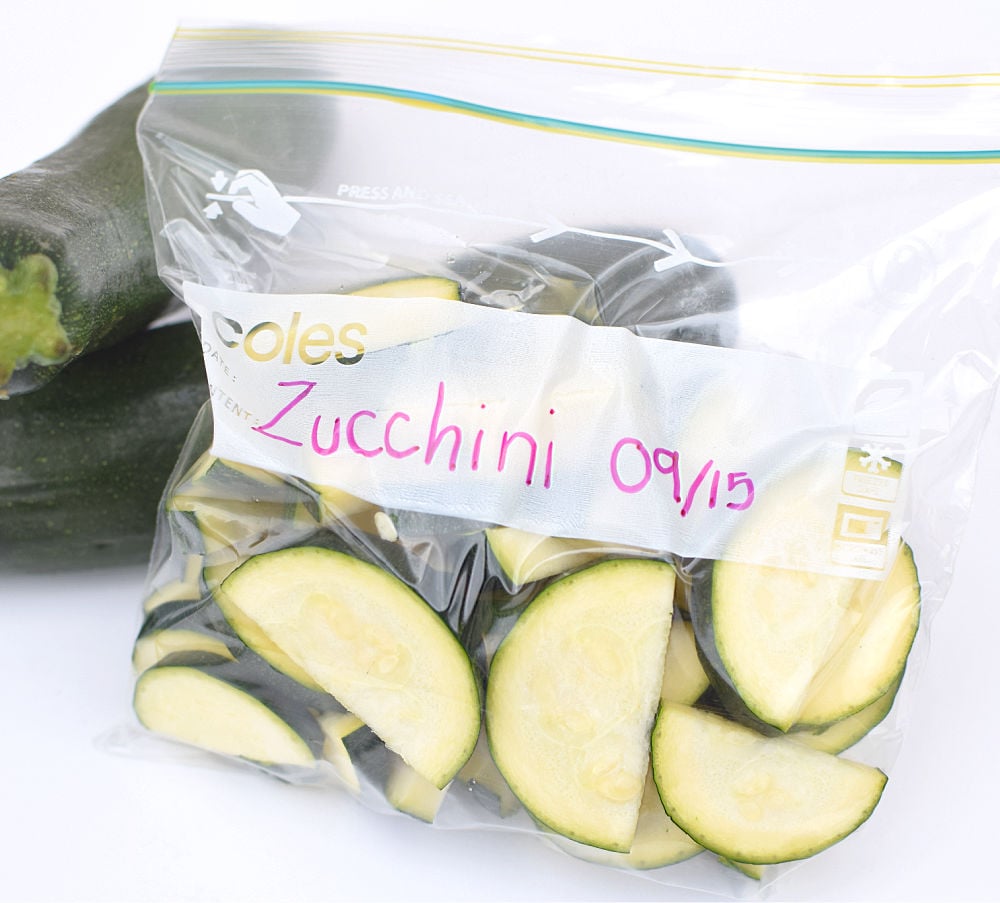
It is best to choose younger, smaller zucchinis rather than the mature ones with skins that grow thick and become chewy once added to the freezer. Follow the instructions below for perfect results every time.
1. Get ready to blanche
Place a large bowl on the kitchen countertop filled with water and ice. Remember to allow some space in the bowl for the vegetables so that the bowl doesn't overflow. Add a large pot of water to the stovetop and bring to a boil.
2. Prep the zucchini
Wash each zucchini in the sink with cold water, making sure that any dirt or residue is completely removed. Using a knife and chopping board cut off the ends. You can use a peeler to remove the skin if you prefer, but we recommend leaving it on. It is the dark green skin that provides much of the health benefits and it adds lovely color to your food.
Slice the zucchini to a size and shape that's the best fit for your recipes. Diced cubes, sliced rounds, half rounds, or even battonets (thick sticks) are all suitable.
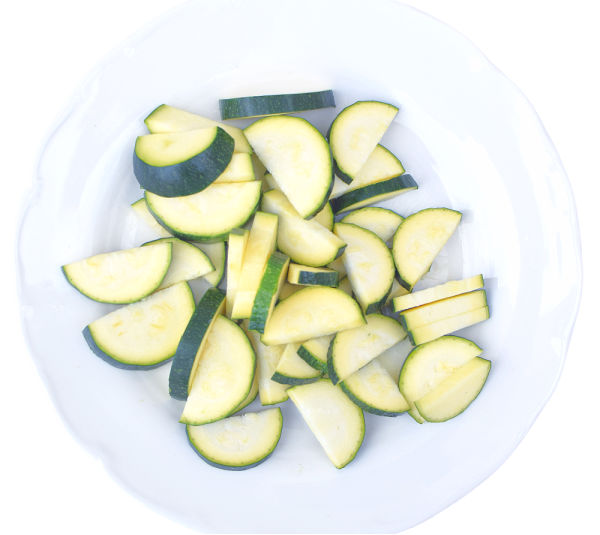
3. Blanch the vegetables
Carefully add the chopped zucchini into the pot of boiling water and allow two minutes boiling time. Cooking for longer will result in mushy vegetables. Scoop out the zucchini and transfer them to the bowl of icy water. This is necessary to quickly stop further cooking. Allow cooling for 5-10 minutes then strain the water and use a clean towel to dry the vegetables.
4. Pre-freeze the zucchini
To help prevent the pieces of zucchini sticking together it is best to pre-freeze them on a baking sheet that has been lined with parchment paper. Lay out the vegetables, ensuring they are not touching, and then freeze for about 4 hours, or until they are solid.
Tip: if you're short on time or you don't care if the zucchini freezes in one solid clump then you can skip individually freezing them.
5 Pack into bags
The final stage is to add the individually frozen zucchini pieces to suitable freezer bags. The zip-lock ones are excellent for portion-controlling. Choose bags that will accommodate one portion of vegetables for a recipe. Fill each bag with zucchini and ensure all the air is removed before sealing securely. Label with name and current date on the side of the bag to avoid any confusion a few months down the track. Place the bags back in the freezer.
Related reading:
Learn how to freeze broccoli.
Find out how to freeze apples the right way.
Discover how to freeze strawberries.
How does a zucchini and a cucumber differ?
How to freeze shredded zucchini
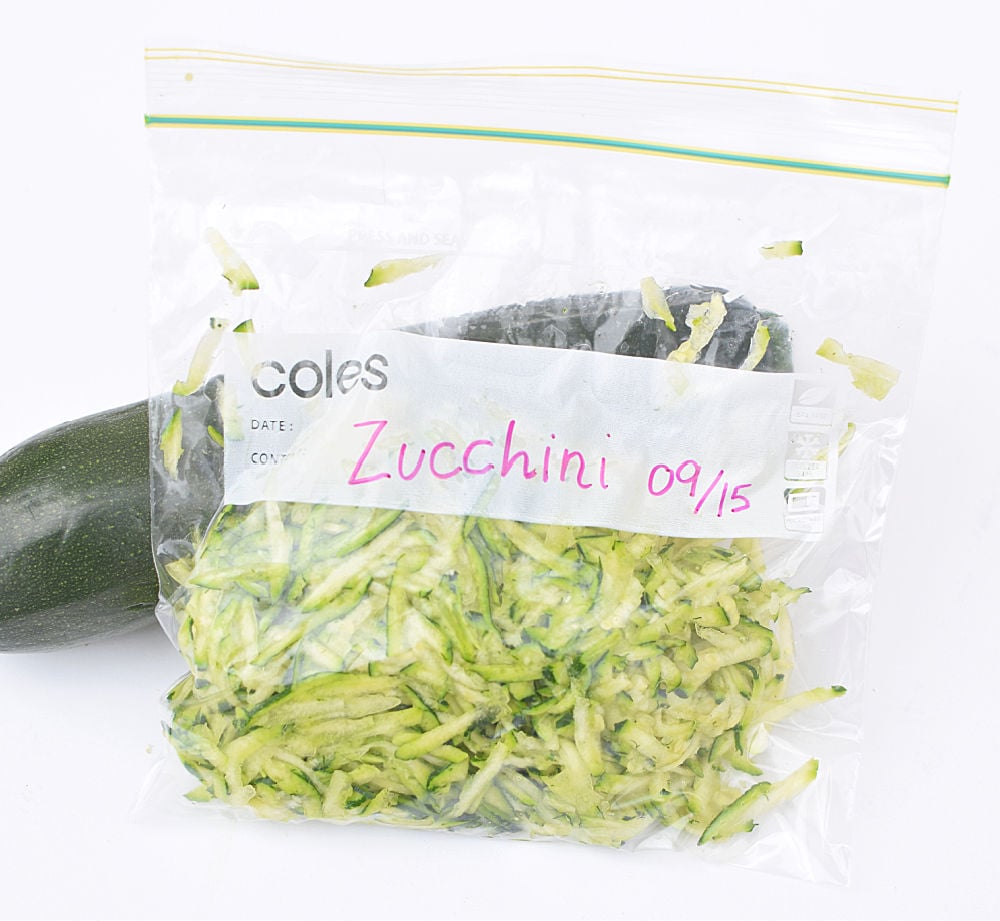
If you enjoy making baked goods like muffins, quiche, frittata, or bread that uses shredded zucchini then it makes sense to freeze it ready to go. You'll use a different technique for shredded and grated zucchini thanks to the high levels of moisture that gets released.
1. Preparation
Any size of zucchini is suitable for this method of preservation. Begin by thoroughly washing them in cold water to remove the unwanted soil and sprays. Using a sharp knife trim off the ends and discard, then remove the soft and spongy seed-filled center if necessary. You may also want to slice your vegetables into smaller, more manageable pieces if they are very large.
2. Shred the zucchini
For large batches of zucchinis you may want to use a food processor that has a shredding blade. However, this vegetable is soft and easy to manually shred with a box grater. If you decide to do it by hand then watch your fingers.
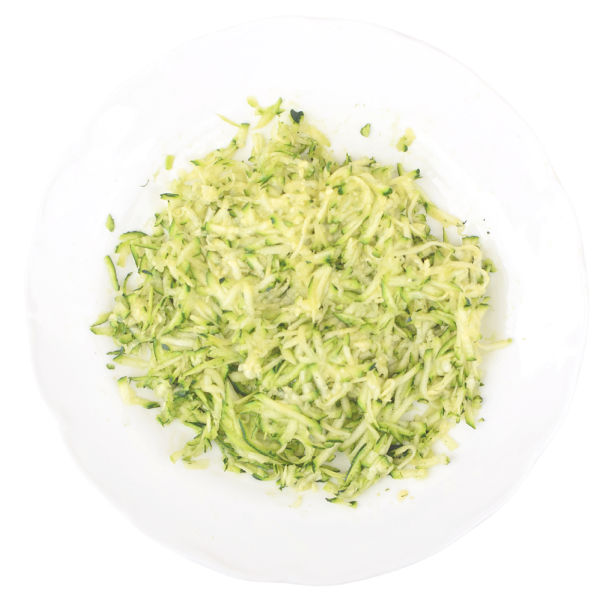
3. Drain the shred
If your favorite zucchini recipe calls for the juice to be removed then follow this step; for everyone else you can skip this one. Not sure whether to drain the juice? As a general rule, leave the juice in for baked goods and remove the juice if you're likely to make quiche or frittatas.
To remove the liquid before freezing you can line a strainer with cheesecloth and add the shredded zucchini. Leave it sitting in the sink for a couple of hours to get rid of most of the liquid. If you don't have hours to wait, then a handy hack is to add the moisture-laden zucchini to a French Press coffee maker. Treat the vegetables like you would a normal batch of coffee and strain out the remaining juice. It sounds a little crazy but it works for getting the "lion's share" of the juice out.
4. Bag the vegetables
Transfer suitable portions of shredded zucchini into zip-lock bags. Think ahead about what you're likely to use this ingredient for in future recipes. If you love making muffins that generally call for two cups of zucchini then it is best to bag up this quantity.
Keep in mind that shredded zucchini is impossible to fully dry so it will freeze as a solid clump. This will make it hard to grab small amounts of the zucchini as required. Instead, you'll probably have to use the whole lot in one go. Ensure all the air is removed from the bag before sealing shut and then label with the name of the vegetable and date. Flatten out the bag and add it to the freezer.
How to freeze zucchini noodles or ribbons
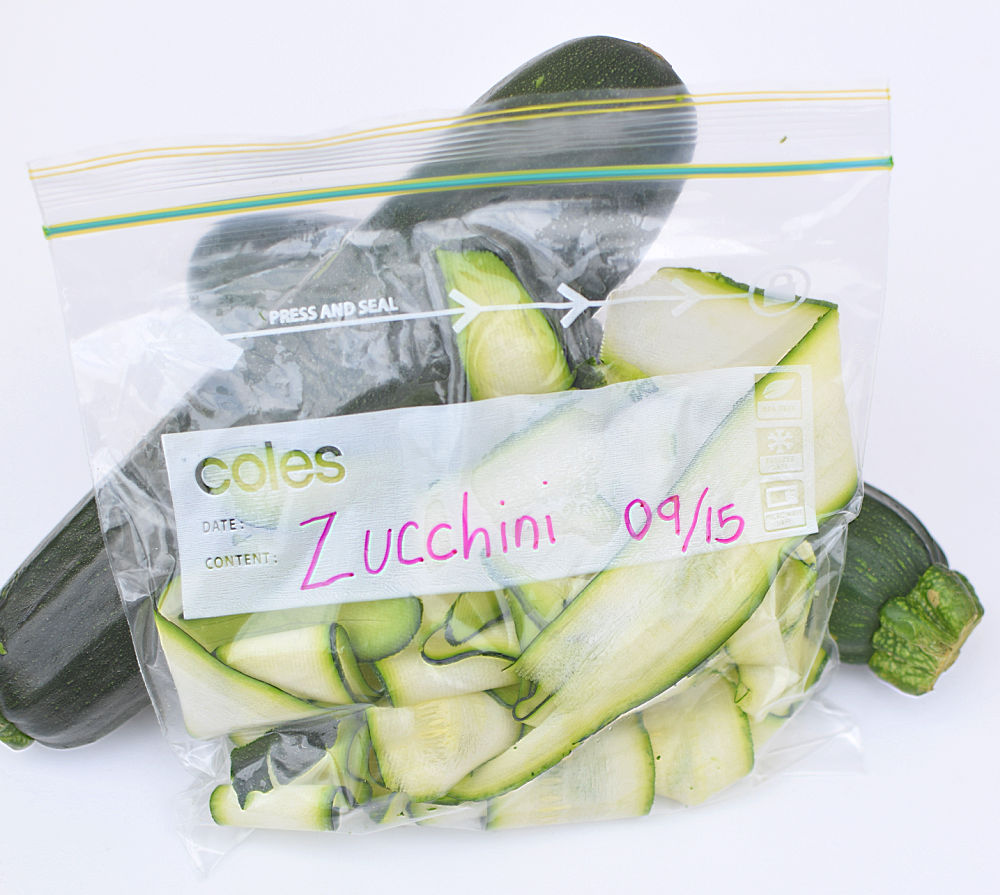
If you own a vegetable spiralizer then making zucchini noodles is a great idea. You can easily freeze them and then add as required to stir-fries, soups, or as a pasta substitute. If you don't have a fancy appliance to make noodle-like vegetables then peel the zucchini lengthways as thickly as possible using a peeler. These ribbons will work just as well in your next dish.
1. Preparation
Wash the vegetables in cold water to remove any unwanted dirt or foreign objects. Chop off the ends and, if needed, scoop out the seeds and soft center. Use a spiralizer or peeler to process all the zucchini into a large bowl.
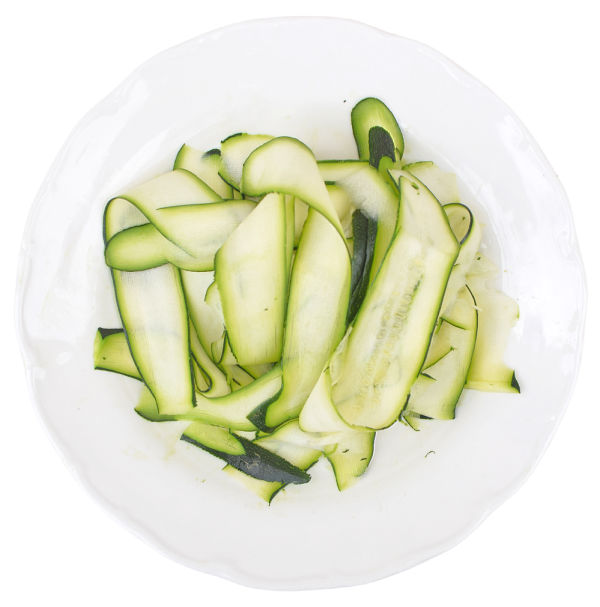
2. Dry
Once you have spiralized all the zucchini you will find that some juice has been released. To remove this unwanted liquid, transfer the vegetables to a towel and gently dab them dry.
3. Package up
Label suitably sized freezer bags with the name of the vegetable and date. Fill each bag with noodles and then remove as much air as possible before closing. Ensure the bags are flat and then add to the freezer.
Summary of freezing options:
Commonly asked questions
How long can I freeze zucchini for?
When stored correctly, zucchini will last for up to 12 months frozen. After this time it will usually still be edible but the flavor, color, and texture will degrade.
Can I freeze zucchini whole?
To freeze whole zucchinis then wash and dry them first before adding to a large freezer bag and sealing. Once thawed, they will be mushy and difficult to work with, so they will be best used in soups or casseroles. Time permitting, zucchinis will benefit from being chopped or shredded before freezing as they will be much easier to use when the time comes.
Do I need to blanch chopped zucchinis before freezing?
Although zucchinis can be frozen raw it is worth taking the time to blanch them first as this stops them from turning mushy and losing their vibrant color once frozen. The process also removes any bacteria that could be on the surface.
How do I cook frozen zucchini?
Frozen zucchini will lose some of its firm texture once thawed so it is best added to dishes that have liquid in them. Casserole, pasta sauce, and soup are all excellent options. Frozen zucchini will not work as well served as a side dish or added to salads and stir-fries.
Do I need to thaw frozen zucchini before using in cooking?
Zucchini can be added directly to dishes while still frozen. If you prefer to defrost the zucchini then place the bag in a bowl and allow it to sit in the fridge or on the kitchen bench until fully defrosted. Some water will form at the bottom of the bowl which you will want to drain out before using.
Can I freeze zucchini puree?
Zucchini puree is excellent frozen and can be added to sauces, smoothies, soups, casseroles, or baked goods. To do this, wash and trim the ends before boiling them for five minutes. Drain and process in a blender, then allow it to cool. Finally, transfer the zucchini to bags and label them before freezing.
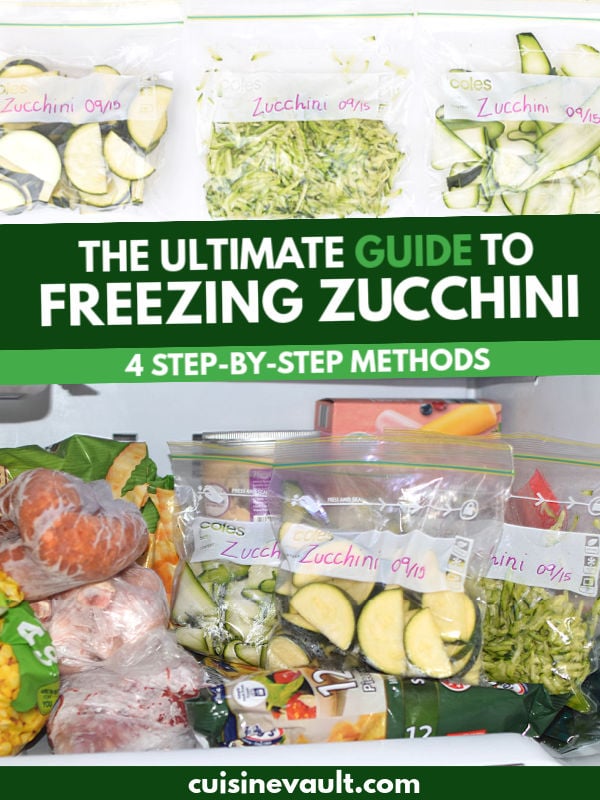
Tips for freezing zucchini
- Although it is usually recommended to salt the water when blanching vegetables, avoid adding any salt if you're going to freeze zucchini. It will result in mushy veggies.
- Freeze chopped zucchini on a baking sheet individually first, then transfer to a bag for freezing. This will stop the pieces from clumping together.
- The best zucchini for freezing chopped are firm and young with bright skin. They should be free from wrinkles, bruises, or soft spots. Mature zucchinis are best puréed or shredded before freezing.
- For best results freeze the zucchinis when they are at their freshest rather than letting them sit in the refrigerator for several days.
- Food expands once frozen so don't overfill the freezer bag as it could burst, exposing the zucchini to freezer burn and other unwanted aromas in the freezer.
- Try to freeze the bags as flat as possible so that they use up less space in the freezer.
Final words
Zucchinis, also known as courgettes, are an excellent option for freezing. This is good to know when we get inundated with overwhelming crops in Summer, or they’re on sale at the store. Keep in mind that they have high levels of moisture so if you're freezing chopped zucchini then it's best to freeze the pieces individually on a baking sheet before transferring to bags. This will avoid clumping which can be quite frustrating when you're in a hurry to cook dinner.
Once thawed, a zucchini will turn a little mushy, and won't have the same delicious texture that you get from the fresh ones. However, they are still excellent for adding to baked goods and for using in slow-cooked recipes like a casserole.
Do you have a special method for freezing zucchini? Please let us know in the comments below and we'll test it out.

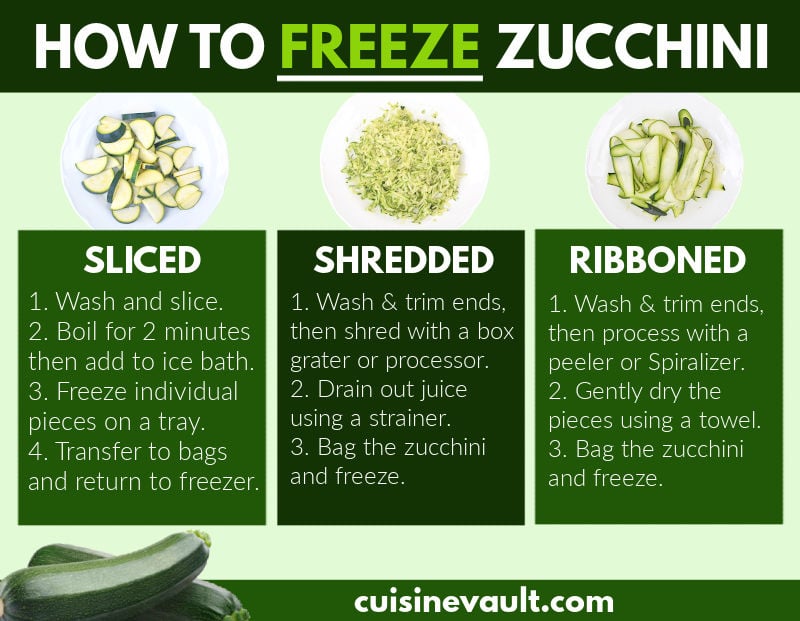
Leave a Reply